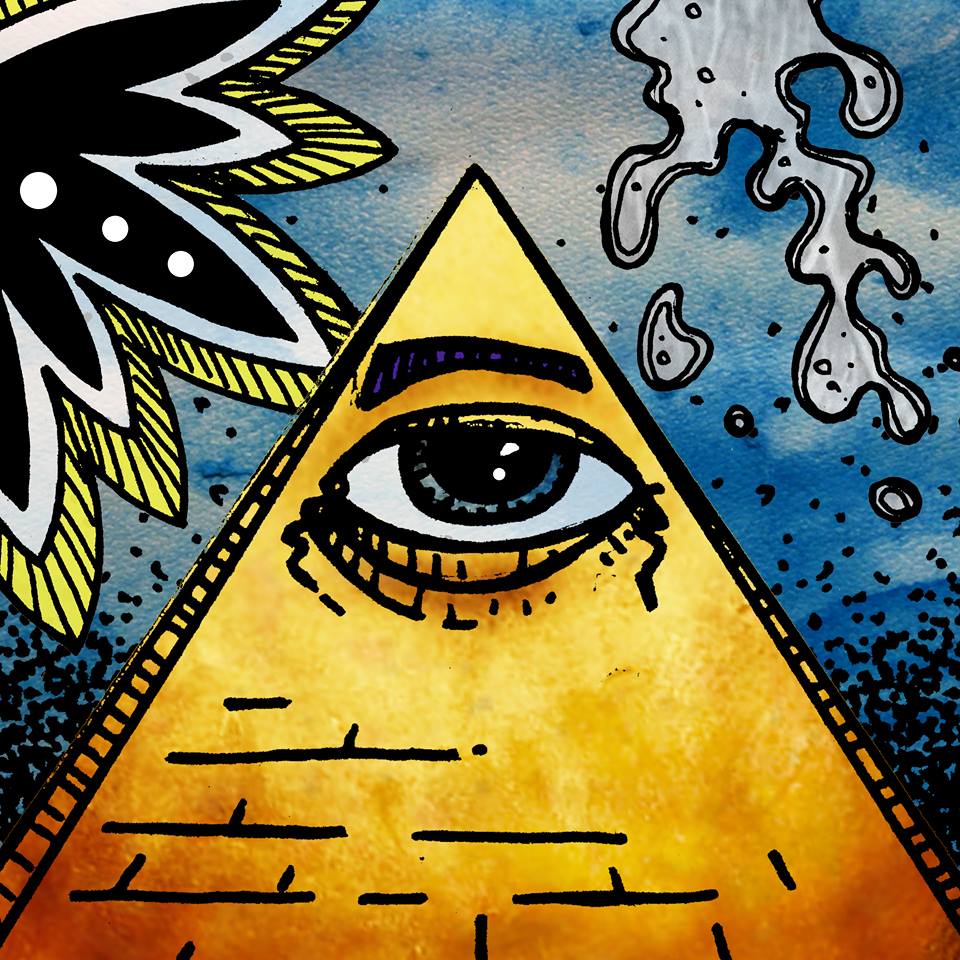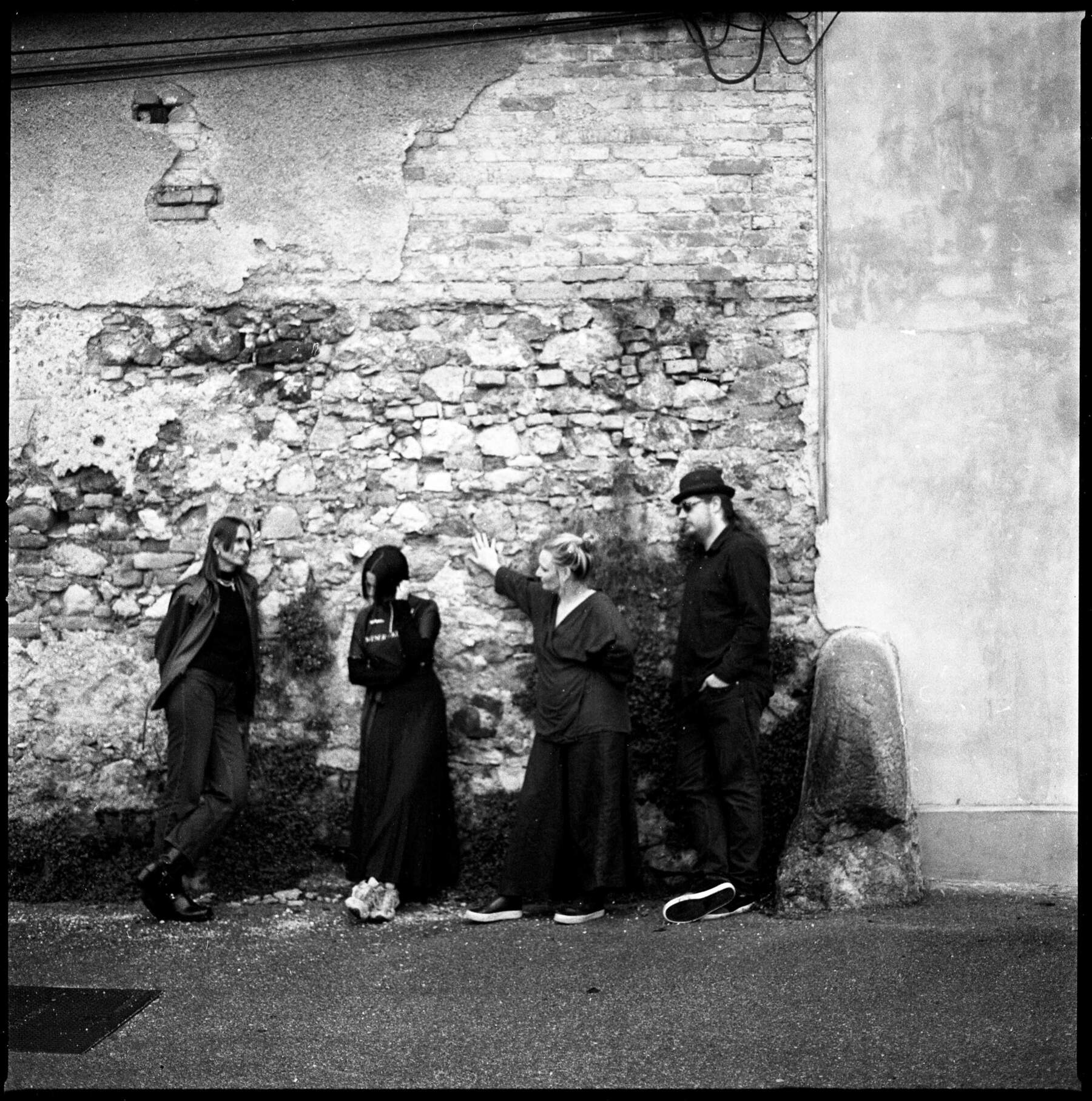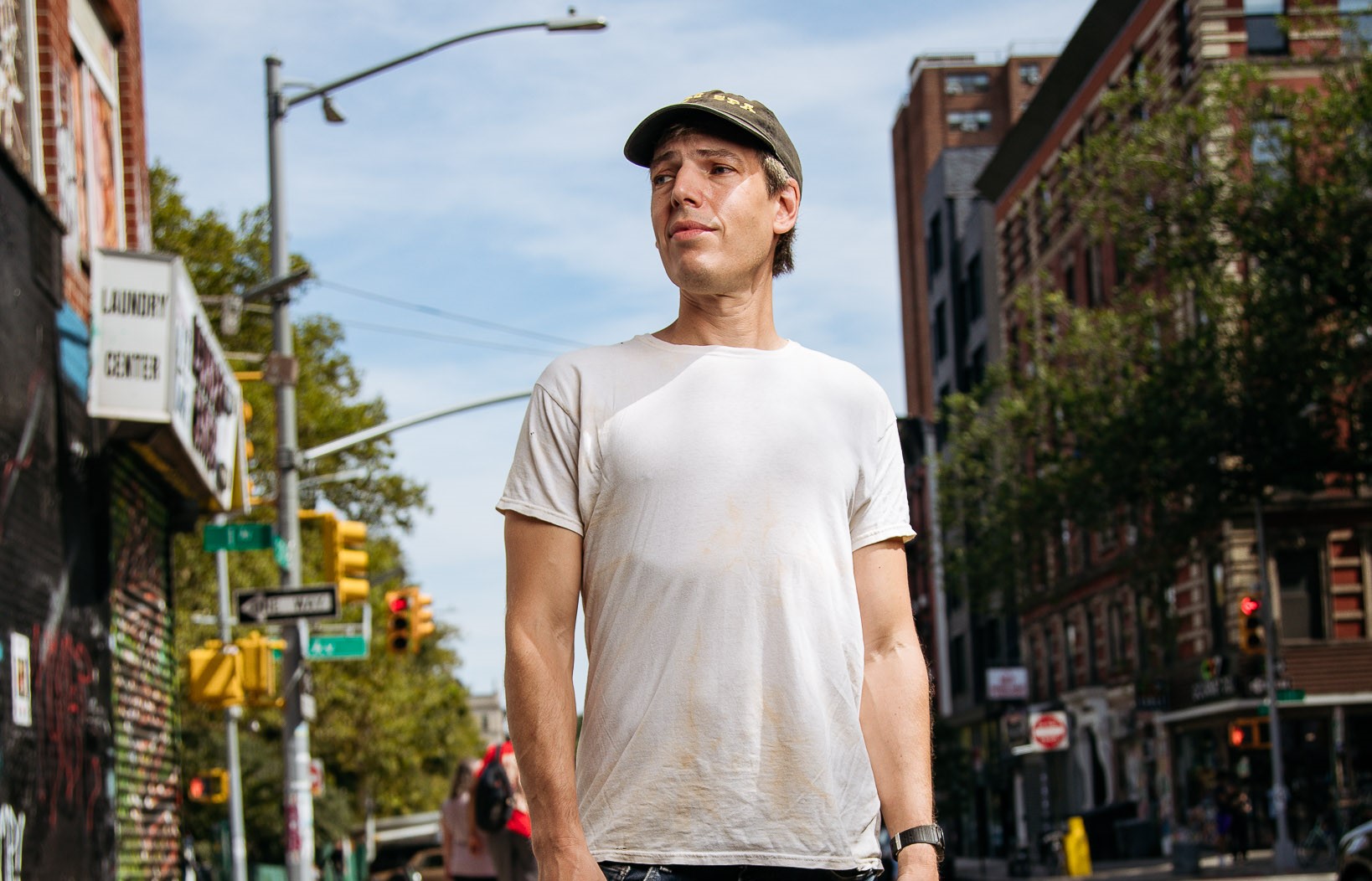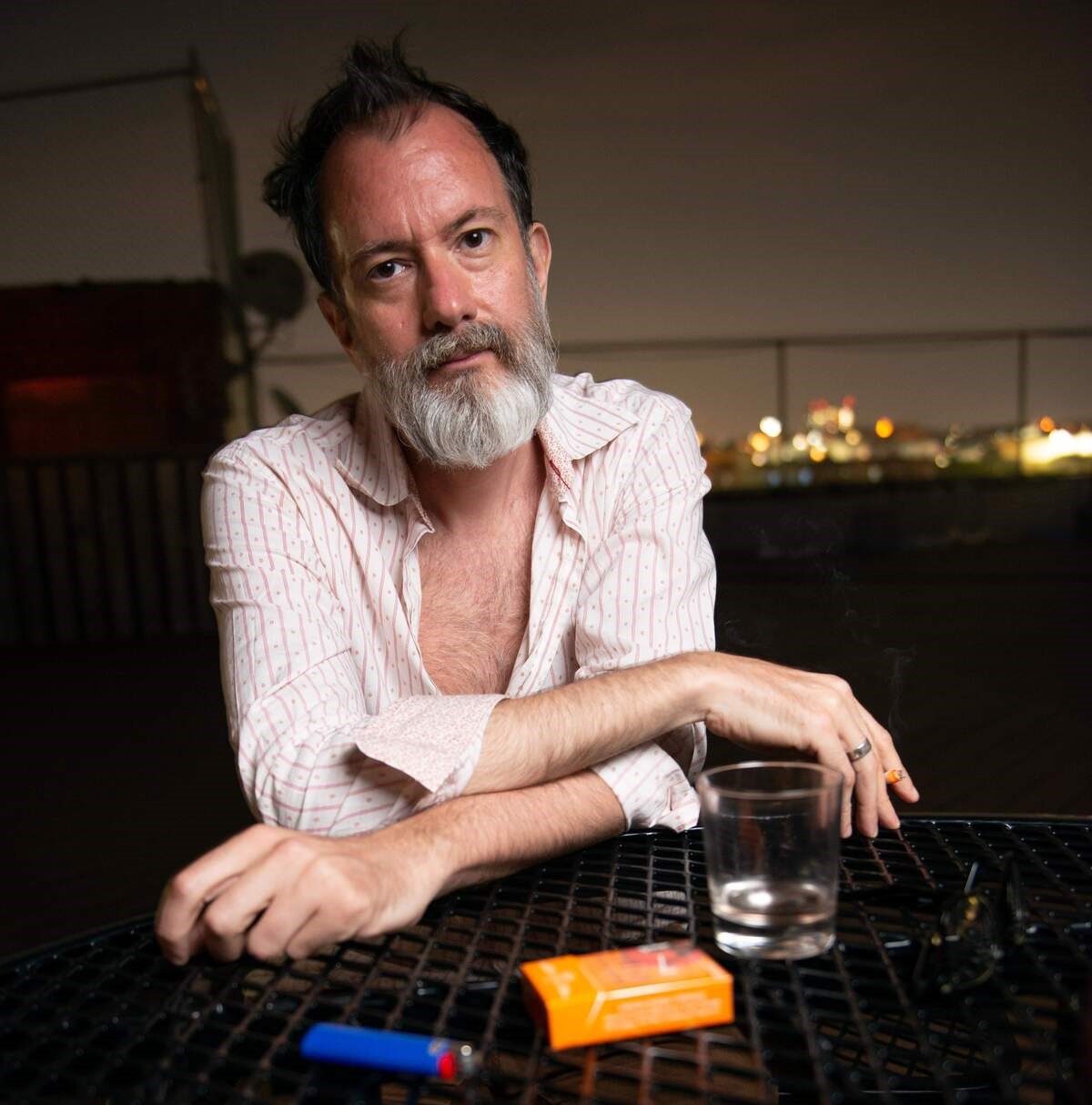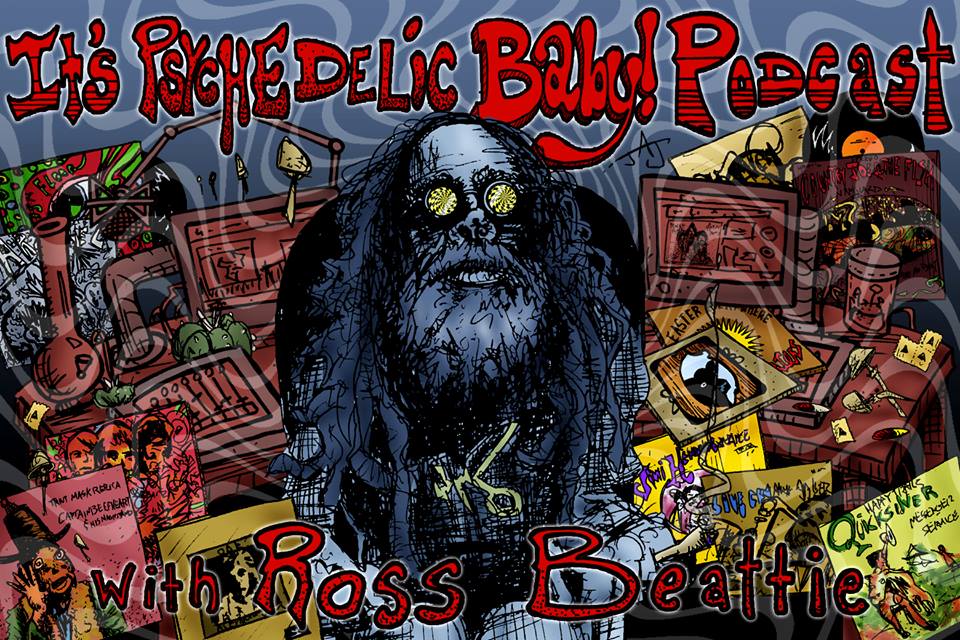Sujevera | Evoking the Unseen
Sujevera’s sound is a whisper from the other side, a dark, ritualistic brew born of isolation and uncertainty.
Formed during the pandemic amidst the chaos of lockdowns, this Slovenian collective channeled those strange times into a deeply immersive and experimental landscape. They’ve created something truly unique: a music that’s as much about listening as it is about evoking the unknown.
Improvisation is the starting point, with fragments of sound emerging and slowly weaving themselves into something more. But it’s not just about making noise; it’s about creating a space for the sound to live and breathe. Each performance, a collective ritual, unfolds in a circle where everyone is as much part of the audience as they are the performers, connecting in an unfiltered way.
The result is a sound that feels both ancient and futuristic, as if it’s been pulled from a forgotten corner of the universe. With DIY instruments that often refuse to behave, every note becomes an act of its own. There’s a playful darkness here, like a séance where the spirits of sound are summoned simply to see what chaos they can stir.
A trip into the weird unknown, a sound that doesn’t care to be understood but demands to be felt.
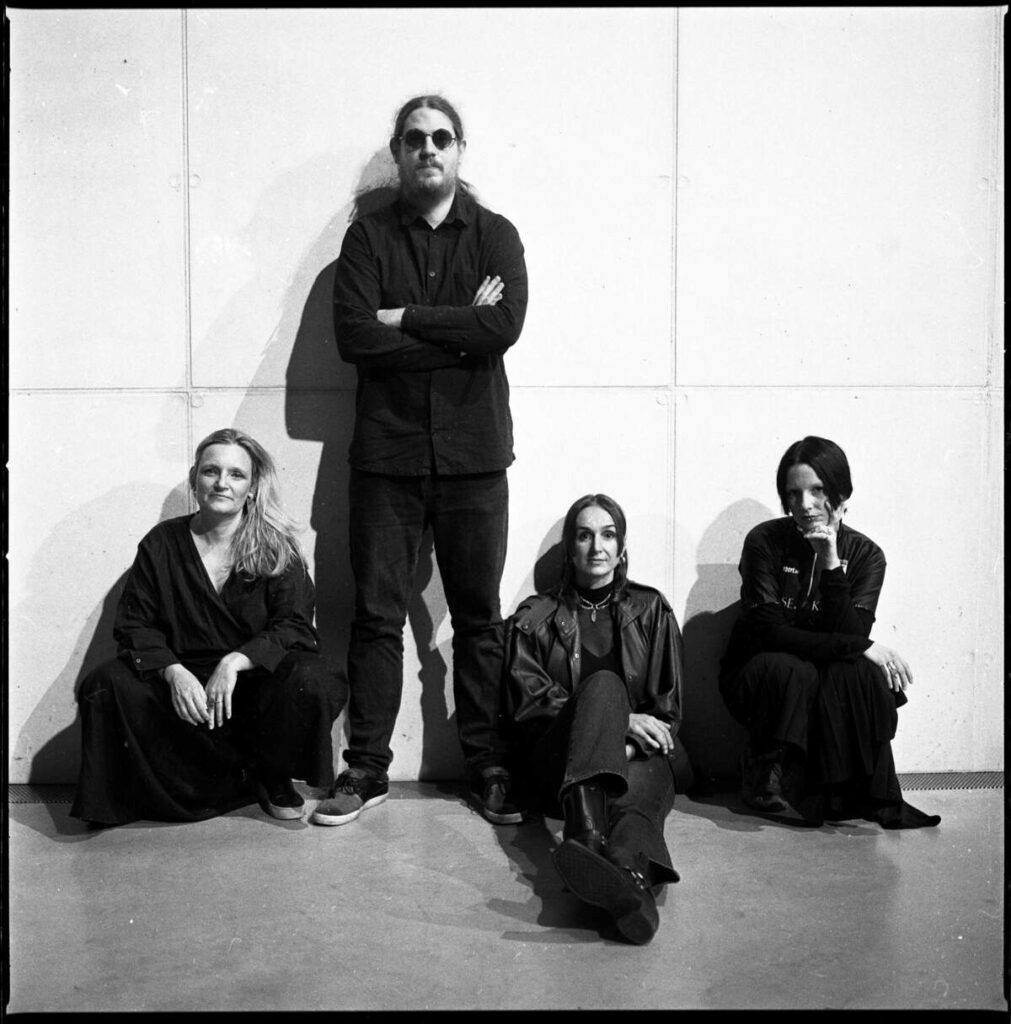
“Rituals are a set of practices applied and handled in a repetitive manner”
Sujevera formed during a residency in 2020, right in the thick of the pandemic. How did the isolation and societal tension of that time shape the way you worked together and the music you created?
Barbara Poček: The pandemic shaped and destined Sujevera’s emergence long before the residency took place. It was originally supposed to happen in March 2020 as part of a residency program called Dvocikel, where Urška had planned for Kikimore (a band that both Nina and I were previously members of) to co-create with them for a week. The first residency was canceled because it was scheduled for the same week the first lockdown was announced.
The date was rescheduled for the fall, but it again fell within the first week of the second lockdown. Luckily, this time the organizers decided not to cancel the residency. However, most of the other members of Kikimore, for various reasons, declined to participate in the residency during that period.
In the end, it was just the two of us (Nina and me) who decided to accept Urška’s proposal to move forward with the residency despite the rising panic. Since Luka was closely connected to Kikimore as their sound engineer—and had also been involved in other projects with Urška—he was invited to join this lockdown experiment and accepted.
Most of the turmoil and uncertainty actually occurred before the residency began. Once we arrived, I think we had a rather privileged experience. We had the entire space in this medieval town to ourselves—well, actually, the whole town. We were able to hang out and work with very few distractions or stress. For me, it was a very precious experience, a kind of rupture where we had the privilege to be together and create while the rest of the world stood still.
Because it was such a unique and strange moment in time, this experience stuck with us and connected us.
The name “Sujevera” carries a deep cultural connection to the idea of superstition. What drew you to this name, and how does it reflect your vision as a group?
Barbara: I think part of it was that we were joking about all the things that had to go wrong for our residency to actually take place. The fact that our last day and the stream of the concert were scheduled for October 31st—Samhain—also influenced the atmosphere and the ideas around the name. Additionally, the instruments Nina and I use are quite delicate and very responsive to the elements.
A lot of the time, we can’t completely predict how they’ll behave, so we jokingly developed some superstitions to address the fears around our instruments misbehaving. For example, rubbing your palms three times has a very practical implication: it removes sweat from the palms, which can influence the behavior of Nina’s copernica.
As you can see, we take these references and mix them with a lot of humor. It might not be visible (or audible) at first, but humor (albeit a dark one) is very much connected to how we relate to the world and, therefore, to what we create.
Nina Orlić: We all flirt a little with the idea of the supernatural and its magic, each of us in our own way. The events that led to the creation of our band and music are special, so we needed a special name—one that could be more or less easily pronounced in many languages. Sujevera was, hence, formed.
Urška Preis: Rituals and routine calm me down, so some might say putting a looper on the same (empty) channel every time before a gig is a superstition, while others might see it as a tool to focus and set the mind for playtime. I think, in general, there is this overlap between superstition and ritual that helps us navigate through the world.
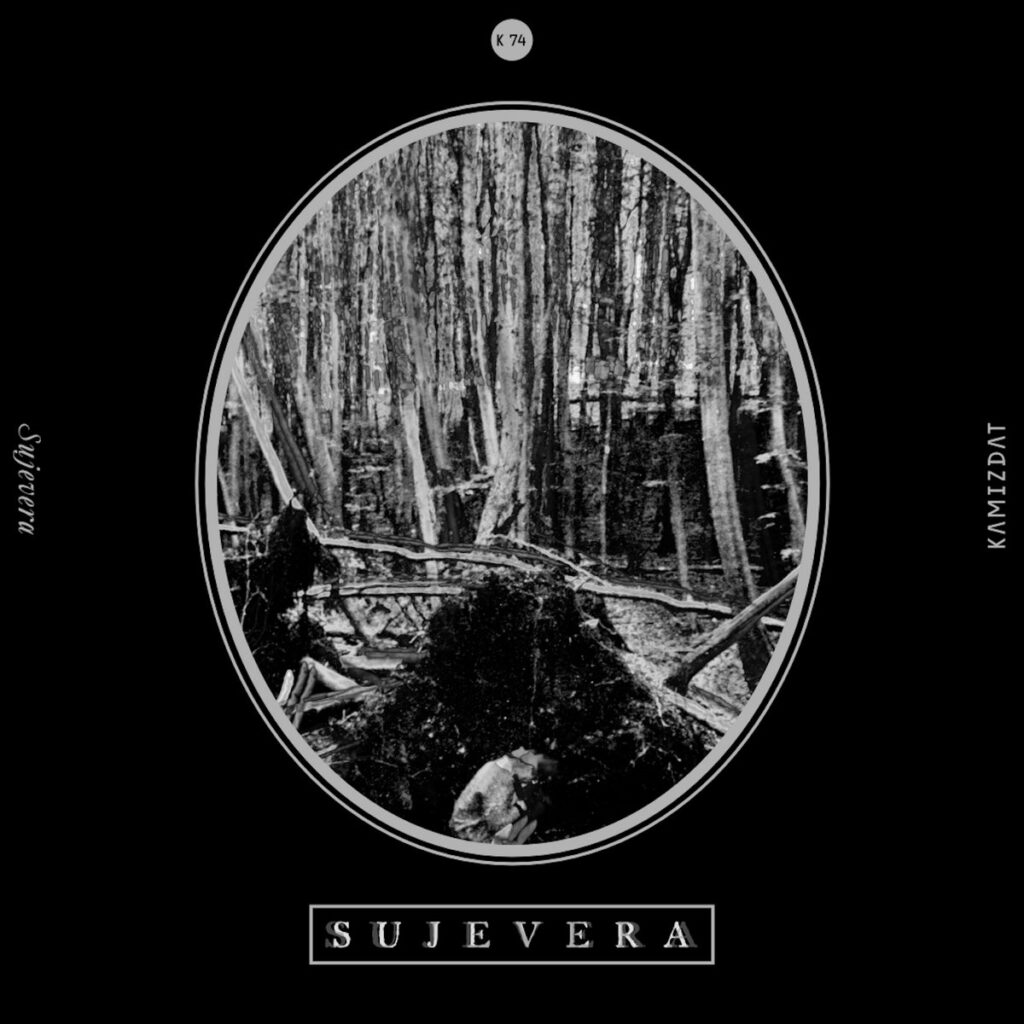
“We come from a very small and tightly knit experimental/DIY community”
Each of you has such a unique background, from crafting DIY instruments to astrophysics. How do these diverse influences blend into the collective sound of Sujevera?
Barbara: It’s important to note that we all knew and worked together before, and we also come from a very small and tightly knit experimental/DIY community in Slovenia. So there are lots of cross-references and shared experiences that bind us in practice and also define it. Being shaped by the same environment makes it easier to bring our different skills together and work in a constructive way.
Working in a constructive way is usually the biggest challenge in collectives and horizontal structures. Somehow, with us, it works—probably because our skills and level of understanding are complementary and because we trust each other.
Your creative process has been called “ritualistic,” though it’s not tied to traditional ceremonies. How do you define these rituals, and what do your sessions look like?
Barbara: For me, rituals are a set of practices applied and handled in a repetitive manner, leaving a lot of space for the emergence of other things. Most rituals involve very meticulous planning to create a certain effect that, in the end, seems “magical.” Our process is like that as well. We need a clear structure that works for all four of us, and a lot of work goes into creating the balance between having something to hold on to and leaving enough space for things to happen in the moment—and being able to embrace that.
We practice the art of listening and awareness, as we really need to be with each other when we create. The fact that we perform in a circle is connected to this, so we don’t lose connection. Ideally, the audience also forms a circle around us. Circles are a powerful tool to connect, protect, and concentrate attention, which is why they are intrinsic to rituals.
Luka Seliškar: I would, however, emphasize that we do not strive to be ritualistic in a spiritual sense. The ritual is not the goal; it is a consequence of our almost childish obsession with getting weird and interesting sounds out of things. The prime mover of our music is our fascination with sounds and electronic devices—not the sort of new-age, neo-pagan spirituality one might assume when hearing our name.
“I don’t think we channel; I think we evoke”
You’ve spoken about the idea of evocation, rather than invocation, being central to your music. How do you use sound to evoke specific memories, emotions, or ideas in both yourselves and your listeners?
Barbara: In spiritual and magic practices, invocation and evocation are used to refer to how one interacts with spirits and energies. Invocation refers to becoming a medium, inviting something into you, whereas in practices of evocation, the other remains the other, and you interact with it outside yourself.
In our creative process, we very much adopted the notion that with what we do, we evoke something into being. Certain sounds that emerge get names and characters, and they stay with us through the process. We interact with them, and also (because of the nature of the DIY instruments), they remain to some extent autonomous. It is a sort of world-building process where it’s no longer just the four of us, but we allow ourselves the magical thinking of evoking other beings into the space. This creates a level of playfulness and helps to solidify and memorise certain parts that happen through improvisation.
At the same time, we remain firmly present with each other but in a playful interaction with the sounds we produce. When we speak about the listeners, it’s probably the fact that the sounds we produce are not always easily identifiable. And because our brains are used to labeling and identifying, this creates the space for people to evoke their own beings and worlds into existence.
How do your communal gatherings and improvisation sessions evolve into the compositions we hear on the album?
Barbara: Parts of this are already answered above, but to summarize: we improvise a lot and let things happen, then we find parts that work and try to translate them into a structure that provides enough support without limiting ourselves to what should be the final result. This works because all four of us have practiced this before and also because we know and trust what each of us brings in and how to support that.
Basically, we know the powers and limitations of our instruments and where they complement each other. Based on that, we build the compositions and make compromises when needed.
The album weaves a mystical, dark narrative that feels like the call of ancient sirens. What stories or emotions were you channeling when creating this soundscape?
Barbara: As explained in the question about invocation vs. evocation, I don’t think we channel; I think we evoke. We bring to life and then build on the sounds that are generated between us. It’s not an individualistic practice; it’s a collective work of imagination and improvisation.
Nina: The “stories” or emotions of our soundscapes almost create themselves. What is refreshing in this quartet is that we are all “yes” people and not afraid to combine different instruments and see what happens. We give each other the space needed to express ourselves in a musical way, and we are not afraid to wander into the unknown, even if it sounds off for a while. But in the in-between spaces is where the magic happens, often leaving us speechless and in awe of what the combos of our instruments can do and what stories they are telling to our audiences.
Luka: Indeed, we have no premade agenda when making compositions. We do not have a story we want to tell; we simply put all our protagonists (instruments) in one place and start conversations with them (by playing them, not by actually talking to the instruments, haha). I believe a big part of why our process looks this way is also our background in improv, as Nina and I have both been involved in improv theatre for 20+ years, which greatly shaped how we approach group interactions.
Your music isn’t directly inspired by folklore, yet it shares structural parallels with ghost stories—unresolved tension, catharsis, and a communal experience. Was this connection intentional, or something that emerged naturally?
Barbara: A bit of both, I would say. I think during the first residency, we created that atmosphere, then built the story around it, and it thus became the story we work and weave into.
Nina: In our music, we tend to explore all the possibilities that our instruments and our charming selves can bring to the table. If one of us brings a sound sample, a new instrument, or an idea, we try it out and try to incorporate it into our music. That is the beauty of working in a band that supports you in all of the musical endeavors one takes. That is what makes our sound unique. We love happy accidents. We love to play with them and later recreate them, hence the feeling of ghosts, tension, etc. The beauty of it is that it happens live in front of the audience during a concert. So yes… it emerges naturally with intention.
Track titles like ‘-12db Mantra’ and ‘Divine Helmet’ are really intriguing. Can you tell us the stories or ideas behind a few of these tracks?
Urška: ‘Divine Helmet’ from the harp’s perspective is my typical approach that focuses on dialogues or conversations and layering. Grabbing knowledge from everywhere I can, I intertwine jazz chords, an experimental approach, and open techniques, and I think the beauty of it somehow comes with the drive of delayed kalimba grooves. All over the place, but still kinda focused? Indeed, an exercise in playfulness and creativity.
I also want to point out my personal hell of Looper on Channel 13, where it is almost impossible to recreate the static loop that is on the album (but I try anyway). To me, this is the happiest of incidents I’ve had during our recording time, and I love how everything just circles around it. The name thus comes from my ritual of putting the looper on a specific (empty) channel before playing (whether I play with Sujevera or not).
Luka: Urška and I are also long-time radio coworkers, and the ‘-12db Mantra’ came about as an accident. We were listening to recordings of previous rehearsals, and when I heard it, I immediately thought, “This sounds like a radio show intro/outro.” So we used it in such a manner. As for the name, since it was to be repeated, mantra seemed appropriate, and the -12db is something one very commonly encounters in the pro audio world.
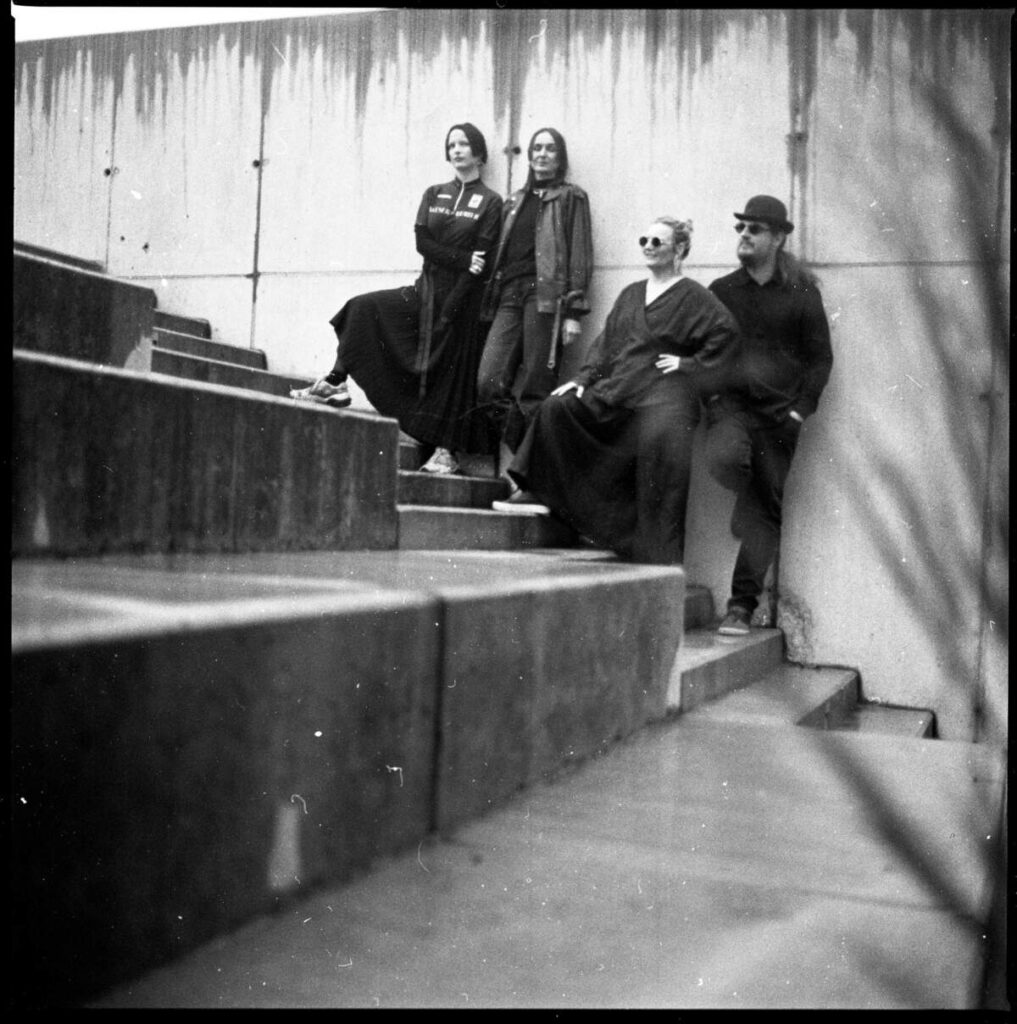
The concept of the “God helmet” touches on altered states and supernatural experiences. Did this or other scientific and spiritual ideas influence your approach to sound design?
Luka: I believe altered mind states are something all of us in Sujevera are intimately familiar with, so it’s something that we are constantly flirting with. If nothing else, a spliff before rehearsal is a common thing, haha. However, I think it must be said that the names for the songs came last and, therefore, had no influence on the creation of the songs themselves. Scientific and spiritual ideas, of course, shape our music, but in an indirect way. We do not purposefully inject concepts into the song; the songs come from an improvised process, as discussed above. However, I, as a physicist by education, always have consideration for scientific concepts in the back of my mind. As for the God Helmet, as well as other titles; the songs were all named after having been finished, so it’s actually the other way around: we let the songs speak for themselves, then we just gave them names that are vague and implicit enough to make people wonder about the connections and correlations.
Barbara: There was a bit of conceptualization happening with the naming of the songs, but, like Luka said, after they were made and when we were thinking about how to approach the materials. Since we decided to name the first album Sujevera, we also decided to make the songs a tribute to the process, so we dived into our inventory of those little jokes we were constantly making in relation to the name Sujevera and named the songs after them. I think the only exception is ‘Extrovert at an Introverts’ Party,’ where the tribute goes to the only extrovert in the gang and all the fun we had when we relistened to this material and discovered the aspect of our characters it manifests. And ‘Logbanger,’ where, well, we produced a banger with a log.
Your sound combines such diverse tools—DIY instruments, harp, and electronic media. What were some of the challenges and surprises you encountered while bringing these elements together in the studio?
Nina: How well they go together and how they complement each other and bring the best out of each other. That was the biggest surprise for us. We usually just play and are in awe of the stories that are being told through our music. The challenges with DIY instruments are the recreation of sounds, feelings, etc. They have a will and a mind of their own, influenced by outside factors (brightness, humidity, etc.). But if we know how to listen to them and react accordingly to the given situation, some of the most interesting and fascinating sounds were created. We treat instruments as individuals. Sometimes they are in top shape, sometimes they do not want to be the headliners. It is up to us to react to the given situation and try to make the best of it. Here, trust between the band members, developed over the years, comes in handy.
Luka: I would say the nature of the devices, as Nina described them, defined the process. I wouldn’t really call that a challenge, since it didn’t really present difficulties, but it definitely made it, for the most part, impossible to have typical recording sessions where we would overdub existing material and/or replace parts, simply because more than half of the instruments aren’t really controllable in a way that would enable repeated execution of the same musical parts. Therefore, the vast majority of recording was done in a “one take” manner; we played, multitrack recorded, and that was it.
Barbara: And then Luka had to dive in and dig out the interesting parts of the recordings, and we had several listening sessions where we tagged and marked the parts we wanted to use. And then also quite a few sessions of rehearsals when we tried to distill the album into a live performance in a way that would preserve its atmosphere and reproduce at least parts of the songs created. As with this process and instruments, this becomes a challenge as well. The live sets are never quite the same or just a reproduction of the album. They always acquire a character of their own.
Luka’s background in astrophysics and sound engineering is fascinating. How does this blend of science and art shape the group’s creative decisions?
Luka: Well, I would say it shapes it in implicit ways. In Sujevera, I never try to wilfully incorporate a scientific concept into the music, whereas I have done so in other cases (like playing the LIGO signal of a black hole merger on the radio; playing gravity waves through electromagnetic waves that we hear as mechanical waves coming from the speaker). In Sujevera, however, I would say my physical and technical background comes through mainly as being the “hater.” Being in a band called Sujevera, one might rightfully assume I am personally close to contemporary spiritual and shamanic practices, but I am the farthest from it. As a physicist, I usually get triggered whenever I hear people talking about “energies” and “vibrations,” and I do not approve of people using established terms when discussing new-age bullshit that is often just a layer of “divine spirituality” that enables them to externalize their own responsibilities and accountability. So, I guess I could say that my scientific background strives to bring a “no bullshit” kind of vibe to the process. That being said, I fully acknowledge that we as people have meaningful spiritual experiences; I just feel like they should be a consequence, or rather a by-product, of our path, rather than the goal.
Barbara: I think all of us, to some extent, share this view that one can have deeply meaningful and spiritual experiences but still stay firmly rooted in science, yet nurture a critical but curious mind about everything else. Being curious, open, and process-driven enables this for us, and I think it is generally a great asset to be able to blend different approaches and beliefs into creative processes. But, as mentioned several times before, this requires trust and a lot of space and respect we give one another.
The liner notes call your music a “modern form of ritual.” How does that philosophy carry over into the technical aspects of production and recording?
Luka: As discussed above, the “ritual” is the consequence of us playing and interacting with our instruments; we let the ritual develop on its own out of our informed exploration of sounds. The technical aspects of making the record follow suit, as discussed above: the songs were mostly recorded in one take and then mixed. The exception here being the two club bangers that were produced from scratch by me using recorded samples, snippets, and passages made with our DIY instruments.
“We would like to do a short tour of our debut music in our neighboring countries and in Slovenia, and a new album soon”
Where do you see Sujevera heading next?
Nina: We would like to do a short tour of our debut music in our neighboring countries and in Slovenia, and a new album soon. Fingers crossed our timetables will support us in the future for doing all that. I would watch out for a new single in the near future…
Barbara: I think it’s important to note that 3 out of 4 of us have day jobs that are not really connected to music and that Sujevera is a passion-driven project that often bumps into real-life limitations, such as time, space, and capacity. In these circumstances, it’s quite difficult to make long-term plans, but we hope to do as much as possible and to work on new material whenever we can and see where that takes us.
Do you have any upcoming collaborations, performances, or multimedia projects in the works that you’d like to share?
Luka: Well, the thing is, since all four of us are busy working in culture anyway, Sujevera is more or less a project that lives when Urška comes to Ljubljana and we have time to do stuff. So, it is not a full-time engagement for any of us and consequently does not have a strictly fixed timetable with plans reaching out into the next few years. But we are always alive, alert, and enthusiastic, so keep an eye out. As for projects outside of Sujevera, my next big thing is a Yugo-futurist record with the band Insan coming out in a few months. And I’m just starting work on a musical score/sound design for a short film.
Urška: As for me, I always have stuff cooking. II/III album, hopefully, comes out in 2025 at last. My long-awaited (hehe) sophomore solo needs finishing, and my work life will then experience a sort of rebirth. Recently, I started working with Janu Krohm, across disciplines, and that collaboration is completely magnetic and explosive, so definitely keep an eye on it. A short movie (or two?) with my soundtracks and sound design should also be released in 2025. More group settings albums (with Zhlehtet, for example) are scheduled. I could go on for a bit longer, but I also don’t wanna jinx anything. And I would be really, really happy to focus on a big intermedia project, so if anyone from the Ministry of Culture and everyone else who got my funding applications is reading this—please give me money.
“The acousmatic principle, in general, is what I would say informs my sound design and live performances”
Many of you are involved in other creative projects. How do these outside endeavors influence or contrast with the work you do in Sujevera?
Luka: Well, being a sound engineer for quite a few bands and collectives like SBO, Insan, Lynch Band, Tschimy, and recently also Senidah, I am constantly surrounded by wildly different music. This, in turn, gives me a lot of width, so to speak. I am, at one time, mixing pop vocals on top of funky songs; other times, I have multiple people rapping over techno beats, etc. I believe that helps to keep me open to different “sounds” and helps me cultivate the acousmatic approach to sound and music that I am so fond of. The acousmatic principle, in general, is what I would say informs my sound design and live performances the most. If possible, I prefer to play from in front of the FOH booth. I believe that the image of me performing is, by far, the least important and interesting thing in my shows, so I prefer to be off-stage when performing. This can most notably be seen in the PRSA ensemble, which is a long-time project that three radio colleagues and I have been performing in.
Barbara: I otherwise work in theatre, and I recently took over leading a small independent performing venue and production house. So, I am in contact mostly with other people’s creative processes in my daily life, but having experience working collectively with Kikimore and Sujevera, and being part of different creative communities, definitely feeds into everything I do—and the other way around as well. It is important to understand the context of the cultural habitat and also to have access to different creative outputs.
Nina: I used to play in a lot of percussion bands, making everything from traditional Afro music, Brazilian batucada, to world music. I was also making industrial music on a big plastic barrel in The Stroj collective. It gave me a very nice experience where the physical part of making music was very present. In all formations, you needed to be fit and sweat like crazy in the live shows. In making electronic music, that part isn’t as present so much. I only bang on the Log now. But we, as a band, are dependent on electricity, which was not the case with my drum collectives. Electricity is life now.
Urška: I earn my living full-time with art, mostly with music. Every project brings new challenges and knowledge, so it inevitably influences what I create in other settings. The contrast with other stuff to Sujevera is that our band always seems less stressful to me, as it brings out my best alongside providing a solid net to fall into. It rarely creates anxiety within me, and the amount of care these people show is outstanding. That is not always the case, especially with bigger, more complex, and hierarchical production, and I don’t want to take it for granted. Compared to solo or duo works, it’s also just easier with dividing the workload, in part because we have very different skill sets that complement each other well. What can I say? I really love these three nerds.
“Pain, suffering and going through it via art and communal activity seems to be a big part of what shaped and influenced me.”
Before we wrap up, could you tell us about some of the earliest influences and projects that shaped you as artists?
Nina: Barbara and I were part of an all-women noise band called Kikimore. We were making our synths by the principles of DIY and DIWO. It was my experience in making electronic music. Our collaboration with Luka started there, with him being our sound tech guy. My earliest music project was being a member of an African drums ensemble, Bobnars United. I was doing industrial music with The Stroj group for years, and Brazilian music in the batucada band, Sherzer brigade. So, I come from the world of percussion music. Throughout my musical career, I was working in music collectives. Sujevera is the first project where we are a quartet, and it is a refreshing change since we are dealing with “only” four personalities.
Luka: If we’re talking earliest influences, then definitely getting an electric guitar at age 15 and listening to Jimi Hendrix with no end. Haha.
Urška: My father’s jazz, blues, and funk enthusiasm, my sister’s grunge moments, and a few people burning random CDs for me was a solid base for what later developed into an obsession with everything slightly off, weird, maybe even embarrassing? Someone recently said my taste is “very blues,” which I found offensive for a second. I like to pride myself on the eclecticism of my ear taste buds, but I guess it makes sense. Pain, suffering, and going through it via art and communal activity seem to be a big part of what shaped and influenced me. But surely, also my classical music upbringing and the realization it bores me (I only ever wanted to play dramatic, minor-based sheets), going away from it, entering the music field back through club doors, Slaviša Stevanović (Evano) challenging my ways of making sounds on/with harp, learning Ableton skills from Tine Vrabič (we form II/III together), the early internet algorithms that were more encouraging towards discovery, my first music editor Žiga Pucelj at Radio Študent always throwing the obscure stuff my way… But amongst all the things that shaped me, I think just living this life in a myriad of ways is the biggest influence on the art that comes out of me.
Barbara: Before Kikimore, I only dreamed about anything close to making music. But I was always a big listener. I guess this partly goes to my late cousin, who, back in the ‘80s, had the biggest collection of cassettes in our little town, and every time we came to visit, I would spend hours with him in his room going through his music collection and listening to everything from The Beatles to Pink Floyd and Hendrix, feeling my horizons expand every time I heard something I never heard before. Like hearing Portishead for the first time and being totally entranced by their sound. By the age of thirteen, none of my friends could listen to the music I chose at the parties or could understand my fascination with the things I dug up. But that didn’t really matter, as long as I could explore and get myself into as many different scenes and listen to weird shit, I was happy. I guess this pure enthusiasm was really helpful when we started with Kikimore because I simply did not care that I had no experience in making music or that this should be any sort of a problem if I wanted to be part of a band. Part of that probably also came from my father, who was a self-taught musician, but for most of his teens, his hearing had already been affected. So, he would still play his guitar or the accordion, but since he didn’t hear well anymore, the sounds he would produce were also quite weird and strange and not so melodic as they were in his ears.
What’s been on your playlist lately? Any recent discoveries that have caught your attention?
Urška: Goooosh, this is a question for me, I suppose. I listen to new releases every. single. day. I think the biggest highlight of the year is definitely the pure madness drive craze album ‘Chak Chak Chak Chak’ by Julián Mayorga. At the gray beginning of the year, I played organ by Zimmerman/Lienhard duo A LOT. The no-input mixer vs. accordion is a match made in hell, and I’m here for it. Simina Oprescu is, for me, one of the strongest researchers of sound of my generation. She is just academically superior, and her ‘Sound of Matter’ release is important contemporary material.
Okay, on the other hand, maybe this is not a question for me because it’s only the tip of the iceberg, and I feel guilty for not going on and on. Most played track: ‘AS Over’ by Amnesia Scanner and ‘Out of a Million’ by Du Blonde. Emo is back.
Barbara: I also thought this is a question for me, and then I realized I now only listen to music for focus, so I don’t get carried away too much during work. My playlist has become really boring and consists of repetitions of Slowdive, William Basinski, and Pauline Oliveros. But I did have a moment of pure “you” this year discovering Colin Stetson’s ‘When We Were That What Wept For the Sea.’
Is there a plan to release your music on vinyl in the near future?
Nina: From your PC to God’s electronic devices. Hope She will be giving and grant us a vinyl version of our albums in the future. It’s one of the goals I’ve had since forever. I have released a few albums over the years, never on vinyl.
Luka: Well, as a modern man of science, I find vinyl a fetish, so I don’t feel the need for a vinyl release. But since modern music hipsters tend to prefer vinyl, I think we’ll make one in the future.
Urška: Luka, stop fetish-shaming. Urška gently cradles and rubs their favorite record of the year. The smell, the touch, the feel of it is superior…
Barbara: LOL! When I win the lottery (which I surely will), we will make only vinyl, and they will include personalized talismans.
Urška: For real though, vinyl are somehow talismans in themselves—near-perfect altars of music marrying visual art. Invitations to slow, focused listening in the times of exploitative platforms and algorithmic consumerist playlists…
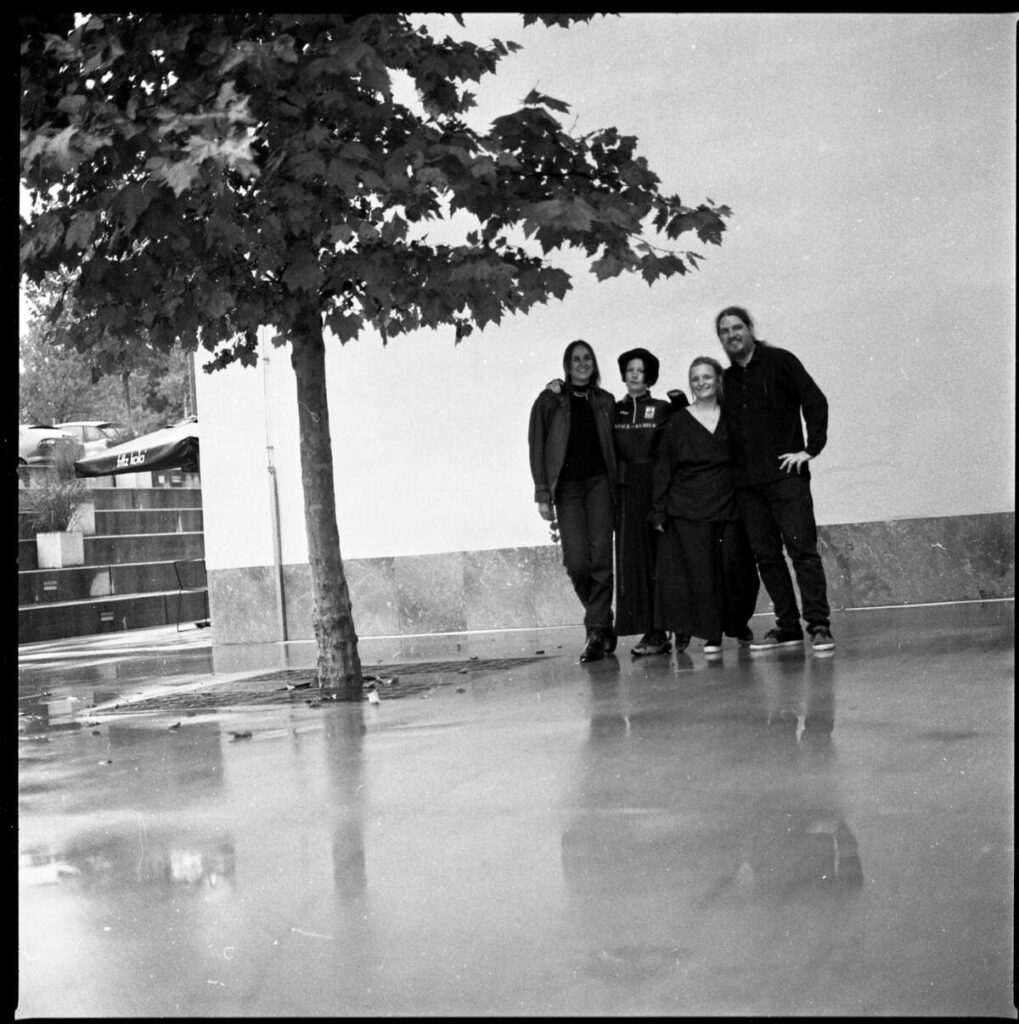
Thank you so much for your time. The final word is yours.
ALL: A pouch of salt, a favorite precious stone in the pocket, and Sujevera music in your ears is the way to go! Support us on Bandcamp!
Klemen Breznikar
Headline photo: Peter Fettich
Sujevera Linktr / Facebook / Instagram / Bandcamp
Kamizdat Website / Facebook / Instagram / YouTube / Bandcamp
